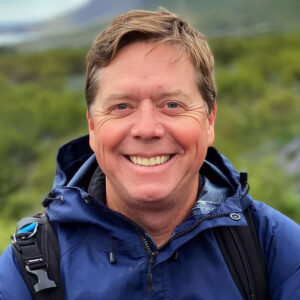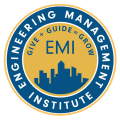In this episode, I talk with Steve Seville, P.E., Director of Salmon Recovery at Parametrix, about how civil engineers can drive real impact through salmon recovery engineering projects. We discuss how civil engineering for habitat restoration and ecology intersect, the role of fish passage design in watershed health, and what it takes to design environmental infrastructure that supports both communities and ecosystems.
Engineering Quotes:
Here Are Some of the Questions I Ask Steve:
- What led you to focus specifically on civil engineering for habitat restoration within the broader field of civil engineering?
- Which types of salmon recovery engineering projects are most commonly associated with watershed restoration, and how do civil and environmental engineers contribute?
- Why is salmon recovery considered such a critical issue, especially in regions like the Pacific Northwest?
- What are the main causes behind the decline in salmon populations?
- Can you share some examples of fish passage design and habitat restoration projects you’ve worked on and explain how project scale influences their impact?
- How can the strategies used in salmon recovery be applied to other fish species or aquatic environments?
- In what ways does scientific research guide the design and long-term planning of watershed restoration projects?
- What recent innovations or trends are changing the way engineers approach salmon recovery and habitat restoration?
- How do you typically collaborate with scientists, government agencies, and local stakeholders on watershed restoration projects?
- What guidance would you offer to civil engineers who want to make a meaningful impact through environmental infrastructure design?
Here Are Some Key Points Discussed in This Episode About Civil Engineering for Habitat Restoration That Drives Ecological Change:
- A strong connection to nature and early experiences with outdoor activities lead many engineers to environmental infrastructure design. When those interests align with civil engineering for habitat restoration, salmon recovery becomes a meaningful and practical way to make a difference.
- Projects often include watershed restoration planning, culvert replacements, and stream restoration to improve fish passage design. Civil and environmental engineers help by integrating ecological priorities into infrastructure design and construction.
- In the Pacific Northwest, declining salmon populations affect ecosystems, indigenous communities, and regional fisheries. Recovery efforts give engineers the chance to support environmental and cultural resilience through thoughtful civil engineering solutions.
- Human development has altered watersheds through sediment buildup, temperature changes, and barriers like dams and intakes. These changes disrupt natural systems faster than salmon can adapt, resulting in widespread population decline.
- Individual culvert projects may only influence a short stretch of stream, but when coordinated across a watershed, they restore larger systems and fish migration routes.
- Large-scale salmon recovery engineering projects like Washington State’s fish passage initiative show how many small fixes can deliver significant environmental outcomes.
Many of the same approaches improve conditions for other species that rely on flowing, connected waterways. Strategies that restore access, flow, and habitat structure benefit entire aquatic ecosystems. - Scientific studies help engineers understand what fish need to survive at each life stage, such as flow velocity and streambed conditions. These insights inform hydraulic modeling, land use planning, and environmental infrastructure design to support long-term habitat function.
- Modern modeling software and computing power allow for detailed analysis of stream behavior and infrastructure interaction. While these tools improve accuracy, engineers still need to focus on solving real problems with practical, data-informed solutions.
- Successful collaboration begins early, with clear communication and shared goals among all project partners. Engineers work alongside biologists, planners, and agencies to ensure each project meets environmental and community objectives.
- Engineers can start by getting involved in projects or organizations that align with their values and interests. Personal engagement in mission-driven efforts often leads to more meaningful work and greater impact throughout a career.
More Details in This Episode…
About Steve Seville, P.E.

Throughout his career, Steve has worked closely with federal, state, and tribal agencies to deliver complex, multi-benefit restoration projects. He brings a science-informed, systems-level approach to salmon recovery—whether that means guiding dam removal efforts or designing smaller-scale improvements across watersheds. Passionate about integrating engineering with environmental stewardship, Steve continues to lead innovation in how we rebuild and protect aquatic ecosystems.
About the Host: K. James Taylor, Jr., P.E.

James was selected as the 2021 Young Engineer of the Year by the American Society of Civil Engineers (ASCE) Delaware Section and is a Delaware Business Times 40 Under 40 2024 honoree. He also serves as the president of the Delaware Engineering Society and on the National Society of Professional Engineers Board of Directors as the New Professionals Director from 2021 to 2023 and currently as the Northeast Region Director. James recently joined the Board of Directors for ACE Mentor Delaware, a no-cost after-school program designed to connect high school students with professionals in the Architecture, Construction, and Engineering (ACE) industry.
Sources/References:
Parametrix
Washington State Fish Passage Program
Connect with Steve Seville, P.E., on LinkedIn
AEC PM Certification
AEC PM Connect
Project Management Accelerator™
Engineering Leadership Accelerator™
Keynote Speaking
About Keen Wealth Advisors

Please leave your comments, feedback, or questions in the section below.







